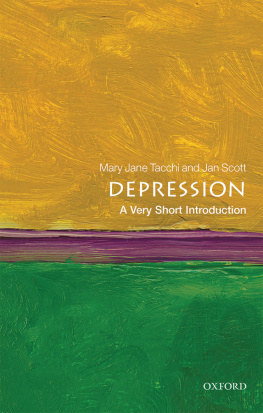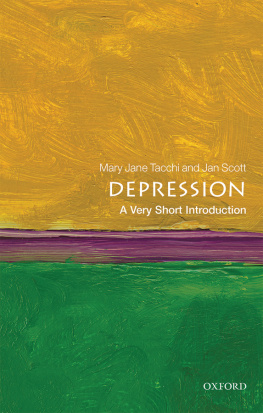
BIPOLAR,
NOT SO MUCH
Understanding Your Mood Swings and Depression
CHRIS AIKEN, MD,
AND JAMES PHELPS, MD

W. W. NORTON & COMPANY
Independent Publishers Since 1923
New York London
Important Note: Bipolar, Not So Much is intended to provide general information on the subject of health and well-being; it is not a substitute for medical or psychological treatment and may not be relied upon for purposes of diagnosing or treating any illness. Please seek out the care of a professional healthcare provider if you are pregnant, nursing, or experiencing symptoms of any potentially serious condition
Copyright 2017 by Chris Aiken, MD, and James Phelps, MD
All rights reserved
First Edition
For information about permission to reproduce selections from this book, write to Permissions, W. W. Norton & Company, Inc., 500 Fifth Avenue, New York, NY 10110
For information about special discounts for bulk purchases, please contact
W. W. Norton Special Sales at specialsales@wwnorton.com or 800-233-4830
Production manager: Christine Critelli
The Library of Congress has cataloged the printed edition as follows:
Names: Aiken, Chris, 1974 author. | Phelps, James, 1953 author.
Title: Bipolar, not so much : understanding your mood swings and depression/Chris Aiken, M.D., James Phelps, M.D.
Description: First edition. | New York : W.W. Norton & Company, [2017] | Includes bibliographical references and index.
Identifiers: LCCN 2016024722 | ISBN 9780393711745 (hardcover)
Subjects: LCSH: Manic-depressive illness. | Manic-depressive illnessDiagnosis. | Manic-depressive illnessTreatment.
Classification: LCC RC516 .A3683 2017 | DDC 616.89/5dc23 LC record
available at https://lccn.loc.gov/2016024722
ISBN 978-0-393-71175-2 (e-book)
W. W. Norton & Company, Inc., 500 Fifth Avenue, New York, N.Y. 10110
www.wwnorton.com
W. W. Norton & Company Ltd., 15 Carlisle Street, London W1D 3BS
To our patients. You showed us what life is like in the mood spectrum, and we hope we got it right, or at least close, in this book.
Contents
PART ONE
WHAT TYPE OF DEPRESSION DO YOU HAVE? |
PART TWO
A HEALING LIFESTYLE |
PART THREE
TREATMENT |
PART FOUR
RECLAIMING YOUR LIFE |
The e-book contains some places that ask the reader to fill in questions or comments. Please keep pen and paper handy as you read this e-book so that you can complete the exercises within.
We are grateful to our colleagues who donated their talents to help bring this book together: Lisa Aiken, Kirtan Coan, Mike Foley, Cheryl Goldberg, Ann McCarty, T.J. Shaffer, Kate Theall, Ali Turner and Jennifer Wittmann. And to our families, whose support helped keep us going: David, Eleanor and Lisa Aiken and Anna-Maria Phelps.
I would take physical pain over this any day. Its a bleak wish, but its one we often hear from people with depression. Depression confuses the mind, strips away hope, and causes people to blame themselves for an illness they never asked for. I must be doing something wrong because medications never work for me, said a man who had tried nine antidepressants. Depression is making me depressed, said another who had suffered for 20 years before receiving the correct diagnosis.
If youve been in that place and found that antidepressants didnt live up to their name, then this book may be for you. We begin by bringing clarity to the diagnosis of depression. It turns out there are many types, and tests are available that can identify them just as accurately as a laboratory work-up does for medical illness. Then we walk you through treatments that can work when antidepressants havent. Last, we talk about the most important things you and your family can do to further your recovery.
This book comes on a wave of increasing understanding of mood disorders and their treatment. Depression turns out to be caused by a very large number of genes that interact with environmental stress. These stressors lead to molecular changes inside the brain that are part of a normal process (called neuroplasticity ) that gets carried too far in depression. The brain regions associated with depression have been so well identified that some research groups are now treating the illness with tiny amounts of electric current delivered precisely into the affected areas (a technique borrowed from the treatment of Parkinsons disease).
Meanwhile, through a literal act of Congress, pharmaceutical companies are now required to release all of their studies, including those that didnt turn out as planned. The full set of data has shown that antidepressants are often ineffective. Only about 30% of those who take an antidepressant reach full recovery; the rest respond partially, or not at all (Trivedi et al., 2006). A few people get worse on them, and we now have clues to help identify them before they are given an antidepressant.
Fortunately, the whole concept of depression is being reexamined and recognized to form a spectrum of problems from plain depression on one end to full bipolar disorder on the other. In between are huge numbers of people who dont have bipolar disorder but dont have plain depression either. Theyre in the middle of the mood spectrum. This idea of a mood or bipolar spectrum used to be hotly debated, but most mood experts now acknowledge that there is no place to put a dividing line between plain depression and bipolar disorder. This change has given researchers the green light to seek more refined treatments, and were beginning to see the fruits of their labors.
The only good thing about depression is that it can go away completely. If you havent reached full recovery, its a good idea to look again at your diagnosis. Or if youre considering treatment for the first time, youll also want to begin with a detailed look at all the diagnostic possibilities for someone who is depressed. Well start there.
Understanding the
Mood Spectrum
Key point: Theres a spectrum of mood problems from depression to bipolar. Depressions that fall in the middle of that spectrum dont fit neatly into diagnostic categories.
An accurate diagnosis can help you find the right treatment. There are over 30 antidepressants in the United States, but theres a type of depression that wont respond to any of them. In fact, antidepressants can even make it worse. One out of every three people who seek help for depression have it, but its so hard to recognize that it takeson average10 years to accurately diagnose (Hirschfeld, 2001).
The depression were thinking of is not bipolar disorder. Its not plain depression either, but it falls somewhere in between these two extremes. It feels like depression, but with an extra edge thats hard to describe. Restless, agitated, anxious energy, mood swingsthese are a few of the words our patients have used for it. You could call it bipolar, and some people do, but we think that word describes it... not so much. At least not in the sense that most people mean when they say bipolar.
In everyday use, bipolar means Bipolar I Disorder, where moods cycle between depressive lows and ecstaticbut destructivehighs. Bipolar means two poles, which are the manic and depressive sides it swings between. Plain depression is called unipolar depression, as it only has one pole and no trace of mania.
Theres not a good word for the type of depression we have in mind, but we think youll find it easier to understand if we let go of diagnostic labels for a moment and look at depression from a different angle. Its called the mood spectrum .
Next page





